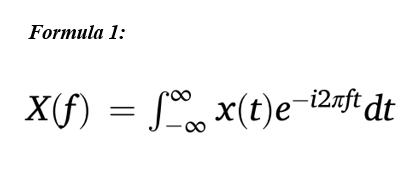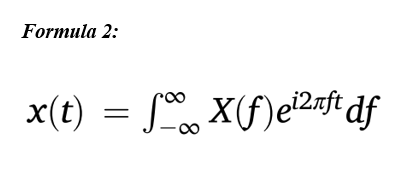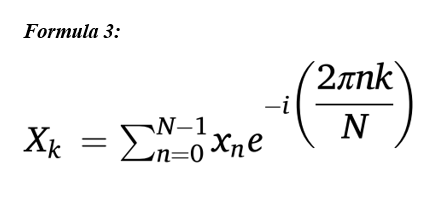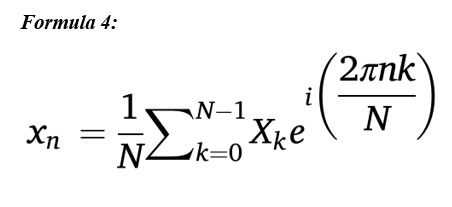Glossary
The instantaneous amplitude of the EMG signal is a measure of how far, and in what direction, the signal differs from zero Volts.The instantaneous amplitude of a signal differs from the magnitude as it can be either positive or negative. It is not recommended as an amplitude indicator for interference EMG signals.
(McManus et al., 2021)The peak-to-peak amplitude refers to the difference between the maximum and minimum values of the recorded waveform observed in a specified time window (epoch). Can be used to quantify the amplitude of motor unit action potentials and compound muscle action potentials. It is not recommended to use peak-to-peak amplitude as an amplitude indicator for the interference EMG signals that arise from the asynchronous firing of motor units during voluntary contractions.
(McManus et al., 2021)A smooth curve that tracks changes in the amplitude of an EMG signal over time.The envelope of an EMG signal is usually estimated by rectifying and then low-pass filtering the EMG signal. When reporting the EMG envelope, the filter characteristics (filter type, order, and cut-off frequency) or duration (and overlap) of the moving average window should be specified.
(McManus et al., 2021)The physiological process by which an electrical stimulus (action potential) initiates a mechanical response in the muscle fibre. In skeletal muscle contractions, an action potential at the sarcolemma of the muscle cell triggers the release of calcium by the sarcoplasmic reticulum. This initiates the sliding of the myofilaments, resulting in a muscle contraction.
(McManus et al., 2021)Broadly, a filter is a system (circuit or mathematical algorithm) used to shape the frequency content of a signal to attenuate unwanted frequency components. Related term: Roll-off. A high-pass filter removes or attenuates the frequency components of a signal that are below a certain cut-off frequency, i.e., a high pass filter lets the high frequencies pass. A low-pass filter removes or attenuates the frequency components of a signal that are above a certain cut-off frequency, i.e., a low-pass filter lets the low frequencies pass. A band-pass filter retains frequency components that are within the band-pass range. A notch (band-stop) filter attenuates frequency components within a narrow band of frequencies. Both analog and digital filters are used in EMG. EMG amplifiers contain analog filters to remove low- and high-frequency components prior to digitization. After digitization, digital filters can be used to further adjust the signal characteristics.
(McManus et al., 2021)Mathematical functions that permit the representation of a signal as the weighted sum of constituent sinusoids of different amplitude, frequency, and phase, enabling a frequency domain representation of the signal. The Fourier series expansion can be derived as a special case of the Fourier transform for periodic signals, or for signals of finite length such as a segment of EMG signal. The Fourier transform, X(f), of an infinitely long signal x(t), at each frequency f, can be expressed as per Formula 1. The inverse Fourier transform is given by Formula 2. The discrete Fourier transform (DFT) of a sampled signal xn (n = 0, 1, 2, …, N−1) is given by Xk, as shown in Formula 3. xn is the value of the nth sample, N is the total number of samples, i is the imaginary unit (i = √−1), Xk is the value of the kth DFT frequency component (k = 0, 1, 2, …, N−1). The original signal x may be reconstructed from its Fourier expansion, X, with the inverse transform, as shown in Formula 4.
(McManus et al., 2021)



The frequency of a sinusoidal signal is the number of repetitions (periods) of the signal per second, measured in Hertz (Hz). Related terms: Fourier transform/Fourier series expansion.The term is often also used, in a less rigorous way, to denote the repetition rate of non-sinusoidal and non-periodic signals, e.g., a square wave or a motor unit firing rate (more precisely defined as pulses/s) and sampling rate (more precisely defined as samples/ s). A non-periodic signal such as an EMG signal contains energy at a particular frequency if it has components that change as rapidly as a sinusoid of that frequency.
(McManus et al., 2021)The H-reflex (or Hoffmann reflex, 1910) is a spinal reflex elicited by electrically stimulating a peripheral motor nerve, typically through a mixed nerve containing both sensory and motor fibres (Palmieri et al., 2004). Unlike the stretch reflex, which is triggered by mechanical stimulation of muscle spindles, the H-reflex bypasses the muscle spindle and directly activates Ia afferent fibres. This leads to a monosynaptic reflex arc, resulting in a muscle response that is recorded via surface EMG. Although the H-reflex activates part of the same spinal circuitry as the stretch reflex, it is not dependent on gamma motor activity and should not be considered equivalent. The H-reflex is commonly used to assess spinal excitability and neuromuscular function in both clinical and research settings.
(Palmieri et al., 2004)A region of a muscle where there is a concentration in the distribution of motor end-plates (neuromuscular junctions). The characteristics of surface EMG signals are affected by the position of the recording electrode relative to the innervation zone. A term that is often confused with the innervation zone is the “muscle motor point”. The electrical motor point is defined as the location on the skin above the muscle where a muscle contraction is most efficiently generated through electrical stimulation. The anatomical motor point corresponds to the location where the motor branches of the innervating axons enter the muscle belly or where they are most superficial.
(McManus et al., 2021)A measure of the opposition to the flow of current into each input terminal of an amplifier, as a function of frequency. Related terms: Resistance, differential amplifier gain.An ideal EMG amplifier has infinite input impedance, i.e., no current flows in or out of the input terminals of the amplifier.
(McManus et al., 2021)We value your feedback
Let us know how helpful you found the recommendations above and how we can improve: